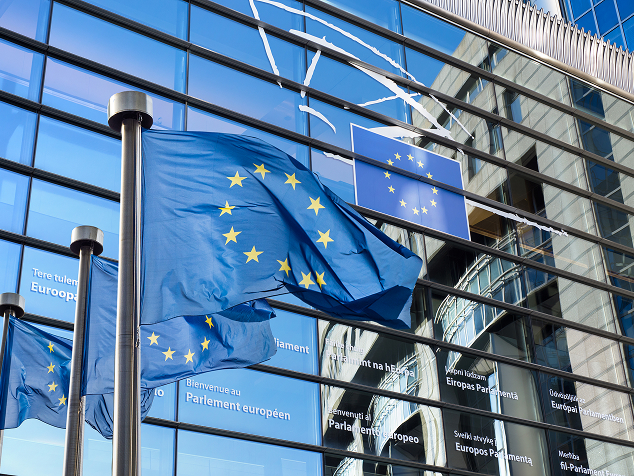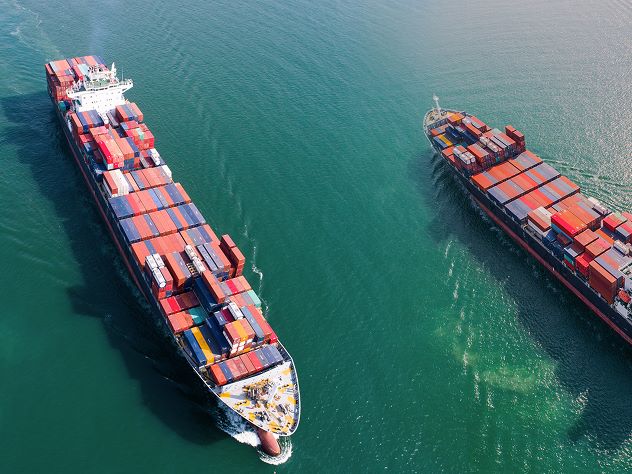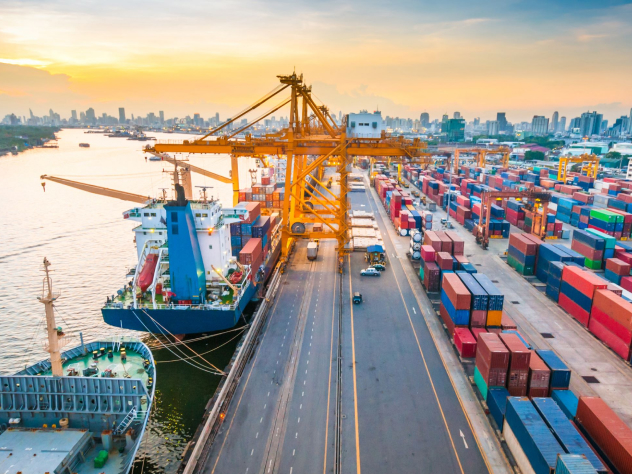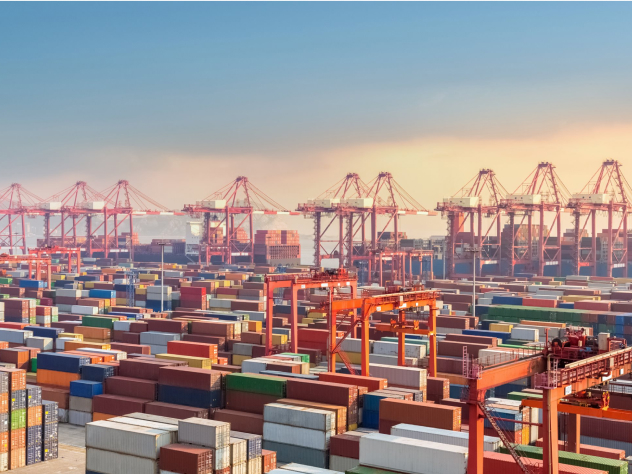Back Expert insights into the EU Customs Reform
How to
Webinar recap—decoding the EU Customs Reform
On June 6th, Kuehne+Nagel hosted a webinar with over 700 participants to illuminate the proposal’s core elements and explore what it means for businesses trading in the region.
Over the course of what was a thrilling discussion, Kuehne+Nagel’s customs expert, Jennifer Kotula, National Customs Manager, covered the following topics:
- Understanding the historical context of the EU Customs Reform
- Examining key changes in the EU customs framework:
— Trust & Check traders
— EU Customs Data Hub
— New realities for e-commerce - Assessing the impact and future implications of the EU Customs Reform
Ready to unravel the EU Customs Reform? Watch our webinar recording and read our experts’ answers to the audience's questions.
Webinar Q&A
Trust & Check (T&C) traders/Authorised Economic Operator (AEO)

 What are the main differences between T&C traders and AEO?
What are the main differences between T&C traders and AEO?
Unlike AEO, the criteria for granting the status of a T&C trader include product safety standards and an electronic system that makes real-time data, such as tracking information and commercial and transport records, available to the authorities.

 What will AEO-certified entities have to do to obtain the new T&C trader certification?
What will AEO-certified entities have to do to obtain the new T&C trader certification?
Companies must check whether the customs simplifications granted for AEO C (Customs) or AEO F (Customs and Security) will still be needed. If so, they must check if they qualify for T&C trader status and apply for it to benefit from the customs simplifications.
AEO S (Security) will remain in place, covering obligations and benefits.
T&C trader status is not automatically granted to AEO holders. Enterprises must apply for it.
It currently needs to be decided if the process is easier or faster for AEO status holders.

 Do you have an estimate of how much work the T&C trader (as a percentage) will equate to compared to the effort of maintaining AEO F?
Do you have an estimate of how much work the T&C trader (as a percentage) will equate to compared to the effort of maintaining AEO F?
No, it is too early to provide a trustworthy estimation.

 Do we need the AEO status before getting a T&C trader status?
Do we need the AEO status before getting a T&C trader status?
According to the actual information, it will be a separate process. You can directly apply for the T&C trader status.

 Can each company apply for AEO?
Can each company apply for AEO?
A company can do so if it meets the outlined criteria. You can find out more here.

 Will the new data requirements for T&C traders significantly differ from those for AEO certification?
Will the new data requirements for T&C traders significantly differ from those for AEO certification?
Yes, real-time data information provided to the EU Customs Authority, including information on product safety, adheres to a higher standard than AEO requirements.

 Does having AEO F mean we will not need the T&C status?
Does having AEO F mean we will not need the T&C status?
The simplification of AEO C will be phased out as part of AEO F. This means that traders interested in simplified customs procedures will need to apply for T&C trader status.

 Would it be possible for a non-established business to be approved as a T&C trader?
Would it be possible for a non-established business to be approved as a T&C trader?
No, the company needs to be registered in the EU.

 When can the new certification set to replace AEO C from 2037 be requested?
When can the new certification set to replace AEO C from 2037 be requested?
As soon as the regulation and its delegating acts come into effect—unless a deviating deadline is announced. The authorities will assess whether AEO C holders qualify for T&C trader status.

 When the AEO is phased out and replaced by T&C in 2037, will T&C also ensure reduced custom controls and smoother flows at borders, as the AEO currently does?
When the AEO is phased out and replaced by T&C in 2037, will T&C also ensure reduced custom controls and smoother flows at borders, as the AEO currently does?
Yes, it will include simplifications, such as clearly defined obligations and responsibilities, in exchange for benefits that ease international trade.

 To import and export internationally, will it be mandatory to have the T&C trader status?
To import and export internationally, will it be mandatory to have the T&C trader status?
No, like the current AEO programme, it won’t be mandatory. However, being a registered T&C trader means you will benefit from the abovementioned simplifications.

 Is it necessary for a T&C trader to make customs declarations as a company rather than as an agent or forwarder?
Is it necessary for a T&C trader to make customs declarations as a company rather than as an agent or forwarder?
You can still declare goods if you are a T&C trader. The role of agents and forwarders is still being discussed.
EU Customs Data Hub/Trader Portal

 With the introduction of the EU Customs Data Hub, authorities will want and have access to more data. However, it doesn't seem like they will be willing to share this information with economic operators, so the relationship will still be one-sided. It isn't easy to get even simple import/export data in some member states today. Companies must chase their brokers instead of directly getting data from the authorities (similar to Management Support System (MSS) reports in the UK). Will we see positive changes in this area?
With the introduction of the EU Customs Data Hub, authorities will want and have access to more data. However, it doesn't seem like they will be willing to share this information with economic operators, so the relationship will still be one-sided. It isn't easy to get even simple import/export data in some member states today. Companies must chase their brokers instead of directly getting data from the authorities (similar to Management Support System (MSS) reports in the UK). Will we see positive changes in this area?
Standardisation may lead to better access to data. Data availability, the criteria for when data can be shared, and with whom it can be shared might help economic operators get better access. Secondly, according to the plans, T&C trader status opens the door for a responsible partnership in both directions.

 Will the EU Customs Data Hub use the Electronic Freight Transport Information (EFTI) document concept, given that it was designed to harmonise electronic documents and is mandatory for EU authorities to accept?
Will the EU Customs Data Hub use the Electronic Freight Transport Information (EFTI) document concept, given that it was designed to harmonise electronic documents and is mandatory for EU authorities to accept?
It is not explicitly mentioned in the proposal but is not excluded. It might be part of the delegating acts or be relevant during the further legislation process.

 Could the EU Customs Data Hub be connected to SAP via API for data exchange?
Could the EU Customs Data Hub be connected to SAP via API for data exchange?
There are currently no specifications regarding how the exchange will occur or which system will be connected.

 After this reform, do we need to integrate data directly with customs, or can we still do it via a customs broker?
After this reform, do we need to integrate data directly with customs, or can we still do it via a customs broker?
Although you can still use a customs broker, as a T&C trader it is not a necessity.

 Some member states might have outdated or paper processes, meaning they could lag behind more digital-first countries. Who will oversee the practical implementation of the reform, and where will the budget come from?
Some member states might have outdated or paper processes, meaning they could lag behind more digital-first countries. Who will oversee the practical implementation of the reform, and where will the budget come from?
Member states need to develop applications to connect to the EU Data Hub. They can also request EU customs authorities to do so on their behalf. The financial effort needs to be covered by the member state.

 Are Romania's Automated Export System (AES) and e-transport system already part of the EU Customs Data Hub?
Are Romania's Automated Export System (AES) and e-transport system already part of the EU Customs Data Hub?
Member states will determine which systems are connected to the EU Customs Data Hub. It is too early to provide detailed information.

 Is there any idea to integrate the Carbon Border Adjustment Mechanism (CBAM) into the new Data Hub?
Is there any idea to integrate the Carbon Border Adjustment Mechanism (CBAM) into the new Data Hub?
The proposal does not specifically mention this. However, the possibility remains that EU and member state systems can coexist, at least during the transition.

 The EU Customs Trader Portal is a cumbersome system that’s mandatory to use and, at times, tricky to navigate. Even customs officers complain about usability. Given increased digitalisation, are there plans to improve the portal?
The EU Customs Trader Portal is a cumbersome system that’s mandatory to use and, at times, tricky to navigate. Even customs officers complain about usability. Given increased digitalisation, are there plans to improve the portal?
The proposal does not specifically mention this. However, it is still possible for EU and member state systems to coexist, at least during the transition.
E-commerce

 There will be just five duty rate options—or buckets—in the future. How are products allocated into these tiers? For example, the duty rate for backpacks is currently set at 2.7%—will this be raised to the 5% category, or will it sink to 0%?
There will be just five duty rate options—or buckets—in the future. How are products allocated into these tiers? For example, the duty rate for backpacks is currently set at 2.7%—will this be raised to the 5% category, or will it sink to 0%?
This only applies to distance sales to EU consumers, specifically under the jurisdiction of Article 14 (4) (2) VAT Directive 2006/112. To reduce effort, the duty rates follow a lump sum approach and are categorised into a five-tier bucket system. The tiers are as follows:
- 0%: goods currently at 0% will continue to benefit (7 chapters)
- 5%: toys, games, and houseware articles (26 chapters)
- 8%: silk products, carpets, and glassware (32 chapters)
- 12%: cutlery, electrical machinery, and clothes (9 chapters)
- 17%: food, beverages, tobacco, and footwear (21 chapters)

 Are the new customs duty categories only for e-commerce?
Are the new customs duty categories only for e-commerce?
Yes

 Do these changes affect every German exporter or only e-commerce traders?
Do these changes affect every German exporter or only e-commerce traders?
They only apply for distance sales from a third-country party to an end consumer.

 Does that mean online platforms like TEMU or TAO BAO now have to pay customs even if they declare the value is under €150? Does this also fit into the five-tier bucket system outlined above?
Does that mean online platforms like TEMU or TAO BAO now have to pay customs even if they declare the value is under €150? Does this also fit into the five-tier bucket system outlined above?
Yes it does, and duties will be applicable from €0.01.

 Will there be any changes in the commercial shipping invoice, and will additional information be required?
Will there be any changes in the commercial shipping invoice, and will additional information be required?
No. The data needs to be accurate and specific, not only for customs purposes but also for risk assessments conducted by authorities.
Harmonised System (HS) codes

 Are there any changes in commodities codes?
Are there any changes in commodities codes?
Yes, but not specifically as part of the reform. They are part of a regular amendment.

 When declaring tariff codes, you can either choose a more specific or a general code. What is the better HS code to use? Are there negative implications for using a general HS code?
When declaring tariff codes, you can either choose a more specific or a general code. What is the better HS code to use? Are there negative implications for using a general HS code?
There are existing rules for classification. If the product is mentioned specifically in the tariff, this code must be used for clearance. If there are any uncertainties, you can apply for Binding Tariff Information (BTI).

 We noticed some changes in the TarBel website (tariff code references). Is this part of the standardisation process?
We noticed some changes in the TarBel website (tariff code references). Is this part of the standardisation process?
There is a regular process for amending tariff codes and measures.
Impact of the EU Customs Reform/Outlook

 What will be the role of the EU Customs Authority?
What will be the role of the EU Customs Authority?
First and foremost, the authority will oversee the EU Customs Data Hub. The new authority will also contribute to implementing an enhanced EU strategy for risk management and customs inspections.

 Can we expect centralised clearance to be implemented?
Can we expect centralised clearance to be implemented?
Yes. This will be available for AEO C holders and probably for T&C traders, too (although the latter has yet to be explicitly mentioned).

 How will the EU Customs Reform affect the simplified customs declaration procedures? Will they also become obsolete?
How will the EU Customs Reform affect the simplified customs declaration procedures? Will they also become obsolete?
No, simplified procedures like “entry in the declarant's records” will remain available.

 As a non-established business, we rely on our EU suppliers using Inward Processing Relief (IPR) when sending them materials. Based on the proposal, do you foresee any changes in IPR procedures?
As a non-established business, we rely on our EU suppliers using Inward Processing Relief (IPR) when sending them materials. Based on the proposal, do you foresee any changes in IPR procedures?
No, there aren’t any significant changes yet.

 Our import shipments are currently EU customs cleared by our forwarders. Can this status be maintained in the future?
Our import shipments are currently EU customs cleared by our forwarders. Can this status be maintained in the future?
Yes, it is still possible. There are ongoing discussions on the mode of representation.

 Will it be possible to clear shipments in other member states rather than in the place of origin?
Will it be possible to clear shipments in other member states rather than in the place of origin?
Yes, there is no change to this.

 Does the customs reform affect the CBAM reporting?
Does the customs reform affect the CBAM reporting?
The reform doesn’t even mention CBAM. It is too early to answer this question. However, there will be an exchange of data between different authorities. Whether this exchange will ease the reporting procedure is yet to be determined.

 On which points is there still disagreement?
On which points is there still disagreement?
There are several topics. The main ones are:
- The temporary storage procedure—the proposal of three days by the EU Commission versus the 90 days proposed by Internal Market and Consumer Protection (IMCO).
- Additionally, the IMCO increases the responsibility for T&C traders regarding compliance standards, specifically the product safety category. For small- and medium-sized businesses, a digital product passport can be made available to authorities to prove safety standards instead of having an electronic system in place.
- During a five-year grace period starting from 1 January 2029, direct representatives can be recognised as T&C traders for small or micro-enterprises.

 What should companies do now to prepare?
What should companies do now to prepare?
They should assess the compatibility of their current record-keeping systems with the new method of exchanging data with customs authorities. They should also evaluate the impact of the abolished customs duty exemption and the introduction of new customs duty categories on their imports. Finally, they should also determine the potential benefits of the new T&C category for their business.
Support

 Is there a country-specific, centralised single point of contact for changes and preparations?
Is there a country-specific, centralised single point of contact for changes and preparations?
It has yet to be officially announced. The IMCO proposal includes implementing a national EU Single Window Customs coordinator. This role would be the single point of contact for the EU Commission and promote cooperation between authorities on a national level.

 Assuming Kuehne+Nagel obtain the T&C status, would businesses who use Kuehne+Nagel as a customs filing agent benefit from this status by proxy?
Assuming Kuehne+Nagel obtain the T&C status, would businesses who use Kuehne+Nagel as a customs filing agent benefit from this status by proxy?
This topic is still part of the negotiation process, especially for midsize and small enterprises that cannot obtain T&C trader status.
Are you interested in learning more about the EU Customs Reform? Visit the European Commission for more information. Additional details can also be found on your local chamber of commerce and customs websites.











